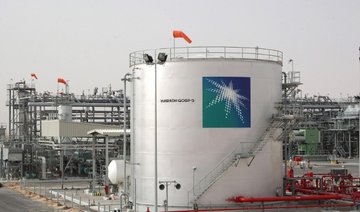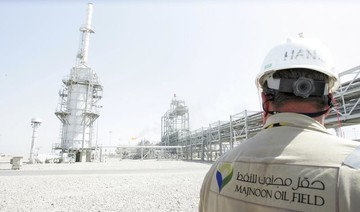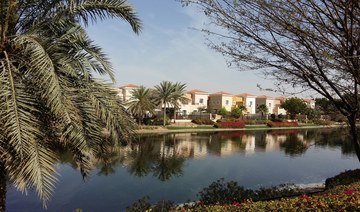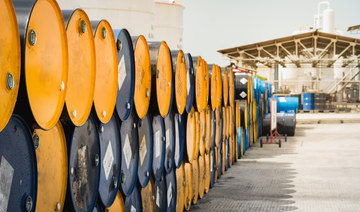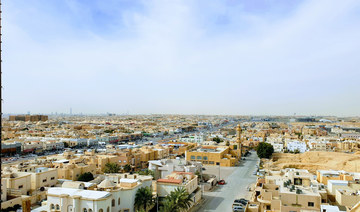LONDON: Royal Dutch Shell launched a long-anticipated $25 billion share buyback program on Thursday as its debt eased while second quarter profits came in far below forecasts.
The share repurchase program, promised following the $54 acquisition of BG Group in 2016, is the clearest signal yet that the world’s second-largest oil company has recovered from a bruising three-year downturn in the energy sector.
“Today we are taking another important step toward the delivery of our world-class investment case, with the launch of a $25 billion share buyback program,” Chief Executive Ben van Beurden said in a statement.
Shell will start buying up to $2 billion of A or B shares every three months, it said. It plans to repurchase at least $25 billion in the period 2018-2020, subject to further progress with debt reduction and oil price conditions, it said.
The move comes as Shell’s debt burden slightly eased in the quarter.
Its debt ratio versus company capitalization, known as gearing, declined to 23.6 percent from a peak of 29.2 percent in the third quarter of 2016 and from 24.7 percent in the first quarter.
Shell’s debt pile nevertheless remained stubbornly at $66 billion, little changed over the past five quarters.
The Anglo-Dutch company sharply reduced spending, cut thousands of jobs and sold nearly $30 billion of assets in the wake of the 2014 oil market downturn.
In a sign of confidence that it can maintain around $15 billion in annual dividend payments, Shell scrapped in the fourth quarter of 2017 scrip dividend, an austerity policy through which investors can opt to receive dividends in shares or cash.
Investor anticipation of the share buyback program increased steadily in recent quarters as profits and cash generation rose with the recovery in oil prices and following aggressive cost cuts in the wake of the 2014 downturn.
Shell’s second quarter profit however sharply fell short of expectations. Net income attributable to shareholders in the quarter, based on a current cost of supplies (CCS) and excluding identified items, rose 30 percent to $4.691 billion from a year ago. That compared with a company-provided analysts’ consensus of $5.967 billion.
The drop in profits came mostly from Shell’s refining, trading and marketing division, also known as downstream, as a result of lower trading results, higher costs and currency exchange.
Shell’s London-listed shares slipped 0.7 percent in initial London trading.
“Despite the weak set of results in our eyes, this (the buyback) is clearly likely to be positive for share price performance over the short term,” RBC Capital Markets analyst Biraj Borkhataria said.
Oil and gas production in the quarter declined to 3.442 million barrels of oil equivalent (boed) from 3.839 million boed in the first quarter of 2018.
Shell launches $25 billion buyback plan, misses Q2 profit forecasts
Shell launches $25 billion buyback plan, misses Q2 profit forecasts
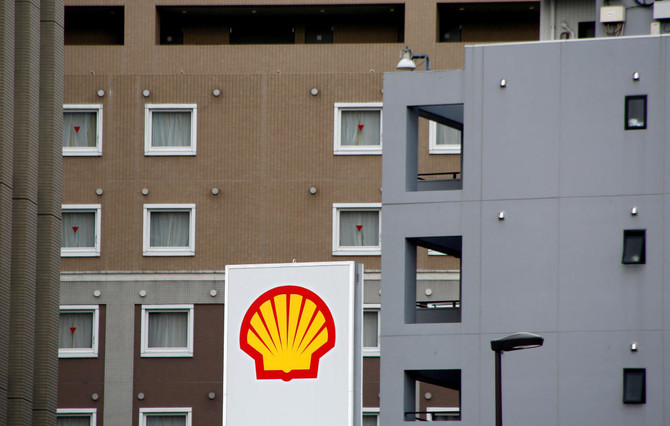
Dubai’s high-end property sales rise on overseas demand
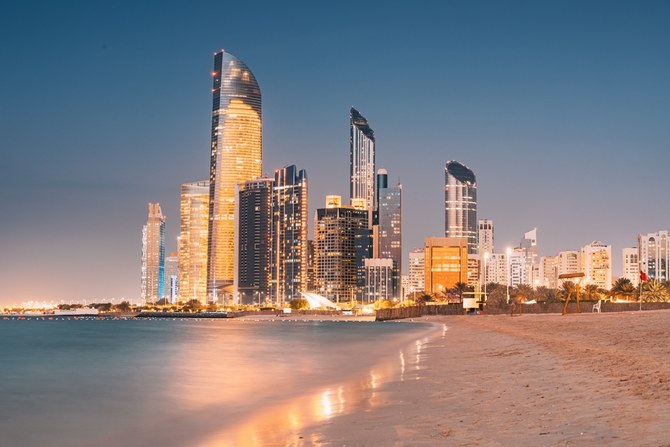
DUBAI: Sales of homes in Dubai worth $10 million or more rose 6 percent in the first quarter versus last year, an industry report showed on Tuesday, as demand from the international ultra-rich for homes in the emirate showed little sign of abating, according to Reuters.
A total of 105 homes worth an overall $1.73 billion were sold from January to March, up from around $1.6 billion a year earlier, according to property consultancy Knight Frank.
Activity was dominated by cash buyers, with palm tree-shaped artificial island Palm Jumeirah the most sought-after area, accounting for 36.3 percent of sales by total value, followed by Jumeirah Bay Island and Dubai Hills Estate.
Home to the world’s tallest tower, the UAE’s Dubai is seeking to grow its economy through tourism, building a local financial center and by attracting foreign capital, including into property.
The recent property boom has shown signs of fizzling out, however, with developers, investors and brokers worrying whether a painful correction akin to the slump that rocked the emirate in 2008 can be avoided.
Last year, Dubai ranked first globally for number of home sales above $10 million, selling nearly 80 percent more such properties than second-placed London, according to Knight Frank.
The city also bucked the trend of falling luxury prices seen in cities like London and New York last year, posting double-digit gains, Knight Frank said in February.
“The level of deal activity in Dubai continues to strengthen, particularly at the top end of the market, where the near constant stream of international high-net-worth-individuals vying for the city’s most expensive homes persists,” said Faisal Durrani, Knight Frank’s head of research for Middle East and Africa.
Durrani told Reuters Dubai was aided by the relative affordability of its luxury homes, where well-heeled buyers can purchase about 980 sq. feet of residential space for $1 million, “about three or four times more than you would get in most major global gateway cities.”
The strong demand suggests many international investors are acquiring Dubai property for second homes rather than “constant buying to flip,” he said, referring to the past practice of buying in order to sell to others quickly for more money.
Oil Update — prices rise on China growth, Middle East tensions
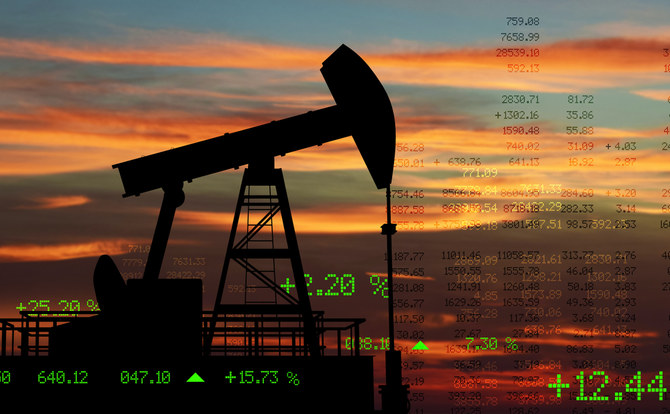
SINGAPORE: Oil prices rose on Tuesday after data showed China's economy grew faster than expected, while heightened tensions in the Middle East also kept markets on edge after Israel said it would respond to Iran’s weekend missile and drone attack, according to Reuters.
Brent futures for June delivery rose 20 cents, or 0.2 percent, to $90.30 a barrel by 10:57 a.m. Saudi time. US crude futures for May delivery rose 21 cents, or 0.3 percent, to $85.62 a barrel.
Earlier in the day oil prices had risen nearly 1 percent following the release of official data from China showing gross domestic product in the world’s biggest oil importer grew 5.3 percent in the first quarter, year-on-year, comfortably beating analysts’ expectations.
However, both benchmarks pared some gains as a raft of other Chinese indicators including real estate investment, retail sales and industrial output showed demand remained weak in the face of a protracted property crisis.
Oil prices soared last week to the highest levels since October, but fell on Monday after Iran’s weekend attack on Israel proved to be less damaging than anticipated, easing concerns of a quickly intensifying conflict that could displace crude barrels.
“Israel’s response will determine whether the escalation ends or continues. The conflict could still be contained to Israel, Iran and its proxies, with possible involvement of the US,” analysts at ANZ Research said in a note on Tuesday.
Israel’s Prime Minister Benjamin Netanyahu on Monday summoned his war cabinet for the second time in less than 24 hours to weigh how to react to Iran’s first-ever direct attack on Israel.
Iran produces more than 3 million barrels per day of crude oil as a major producer within the Organization of the Petroleum Exporting Countries.
World Bank raises Saudi Arabia’s 2025 GDP growth forecast to 5.9%
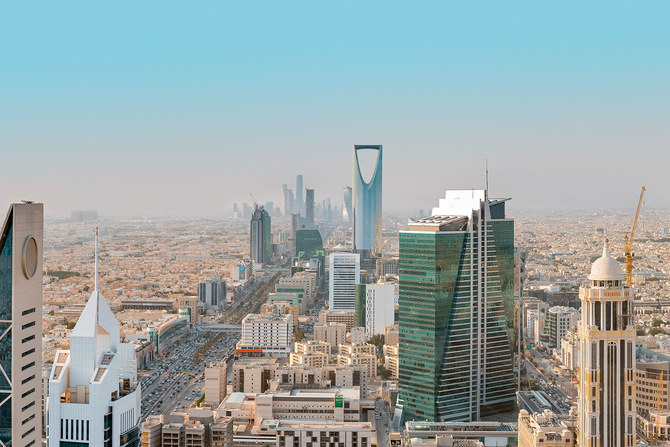
RIYADH: The World Bank has raised its expectations for Saudi Arabia’s economic growth to 5.9 percent in 2025 from 4.2 percent predicted earlier in January.
In its latest report the bank, however, revised its 2024 forecast for the Kingdom’s gross domestic product growth downward to 2.5 percent from an earlier forecast of 4.1 percent.
Concurrently, the overall GDP growth forecast for Gulf Cooperation Council countries in 2024 has been reduced to 2.8 percent, down from 3.6 percent, while the 2025 forecast has been revised to 4.7 percent from 3.8 percent.
The report also adjusted the UAE’s GDP growth forecast to 3.9 percent for 2024, up from the previously projected 3.7 percent, with a further rise to 4.1 percent in 2025, from 3.8 percent.
Kuwait’s economy is expected to expand by 2.8 percent in 2024 and increase further to 3.1 percent in 2025.
Similarly, Bahrain’s economy is likely to grow by 3.5 percent in 2024 and 3.3 percent in 2025, marking an increase from January’s projections.
Meanwhile, Qatar’s economy saw a downward revision for its 2024 forecast from 2.5 percent to 2.1 percent but an upward revision for 2025 from 3.1 percent to 3.2 percent.
Oman’s economy projections for 2024 and 2025 saw a marginal increase of 0.1 percent since the January forecast.
This adjustment reflects the broader economic trends where the surge in oil prices following Russia’s invasion of Ukraine in 2022 bolstered oil-exporting economies in the Middle East and North Africa.
In contrast, economic growth in non-oil-exporting nations — including MENA oil importers like Djibouti, Jordan, Morocco, Tunisia, and the West Bank and Gaza — has slowed.
By 2024, the growth disparity between GCC oil exporters and developing oil importers is expected to narrow to just 0.9 percentage points, marking a significant shift from 2022 when GCC countries grew 5.6 percentage points faster, the report stated.
“Developing oil exporters will grow 2.8 percent in 2024, down from 3.1 percent in 2023 while growth in developing oil importers is forecasted to decrease to 2.5 percent in 2024, down from 3.1 percent in 2023,” the report stated.
Overall, the MENA region is expected to achieve a growth rate of 2.7 percent in 2024, which aligns with pre-COVID levels but still trails the global average.
While other emerging markets and developing economies are also projected to remain below pre-pandemic growth rates, they are expected to surpass the MENA region by 1.2 percentage points in 2024.
GCC oil companies’ capex to grow by 5% to reach $115bn in 2024
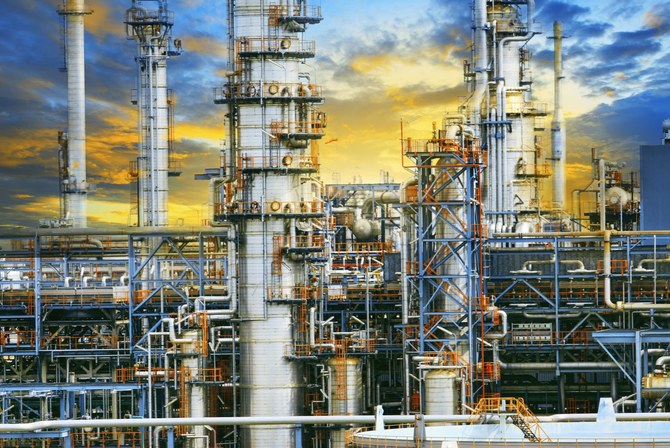
RIYADH: The capital expenditures of national oil companies in the Gulf Cooperation Council are likely to grow by 5 percent in 2024 as compared to the previous year and are expected to reach $115 billion, according to a report.
The analysis by S&P’s Global Ratings, however, does not take into account the potential surge in spending from recent expansion plans such as the North Field West Project in Qatar, which it said could significantly boost expenditures.
The report highlighted that while the growth in capital expenditure is modest, Saudi Arabia’s planned output cuts in line with the current policy of the Organization of the Petroleum Exporting Countries and its allies, known as OPEC+, is likely to decrease demand for drilling platforms, operating ratios, average daily production rates, and profitability among regional drilling companies, especially in the Kingdom.
“We stress-tested the effect of a hypothetical 15-20 percent loss of total rig demand in the region on GCC drillers, and we estimate that the debt to EBITDA (Earnings Before Interest, Taxes, Depreciation, and Amortization) of rated and publicly listed drillers based in GCC countries could increase by about 1x on average,” S&P Global Ratings Credit analyst Rawan Oueidat said.
“At this point, we think that drillers’ rating headroom could shrink, but we don’t expect any short-term rating pressure,” Oueidat added.
The agency also raised concerns about the future of capital expenditure in other oil and gas-producing countries of the GCC, following Saudi Aramco’s decision to suspend its plan to increase the Kingdom’s maximum production capacity.
Despite these concerns, the total oil capital expenditure in the region is expected to remain relatively high due to the ongoing expansion plans in Qatar and the UAE.
However, the pace and magnitude of spending are expected to impact oilfield service companies and the entire value chain, particularly drilling companies whose business models heavily rely on corporate capital expenditures.
The UAE’s Abu Dhabi National Oil Co. is set to increase its oil production capacity to 5 million barrels per day by 2027, up from 4 million bpd as of February 2024, according to the US Energy Information Administration.
Meanwhile, Qatar is aiming to boost its liquefied natural gas production capacity to 142 million tonnes annually by 2030 from the current output of 77 million tonnes.
The report predicted oil prices to average $85 per barrel for the remainder of 2024 and $80 per barrel the following year.
It also suggested that geopolitical tensions and planned production cuts by OPEC+ will support prices and enhance the cash flows of oil companies across the Gulf region.
Saudi housing program Sakani benefits over 32,000 families in Q1

RIYADH: As many as 32,343 Saudi families benefitted from Sakani’s housing options during the first quarter of 2024, marking an annual 15 percent increase.
In collaboration with the Real Estate Development Fund and financial institutions, the program provides a variety of housing support packages to encourage first-time house buyers, including non-refundable financial assistance of SR100,000 ($26,659) or SR150,000.
The number of the Kingdom’s households that purchased their first homes reached 25,391 in the first three months of the year, reflecting the objective of Sakani to offer a variety of residential options and financial solutions.
Founded in 2017 by the Saudi Ministry of Housing and the Real Estate Development Fund, the program aims to increase the proportion of families that own a home in the Kingdom to 70 percent by 2030, in line with the economic diversification strategy Vision 2030.
Figures from Sakani showed that the number of beneficiary households reached 12,184 in March, with 9,381 Saudi families obtaining their first residence.
In January, Sakani announced that more than 100,000 Saudi families benefited from the initiative in 2023, while the number of applicants who obtained their first home over that 12 month period reaching 98,475.
The core objectives of the Sakani initiative are to enable homeownership in the Kingdom by creating new housing stock, assigning plots and properties to citizens, and providing financing for their purchases.
The Sakani website and application provide a wide range of housing facilities and services, such as real estate consultancy, issuance of real estate transaction tax certificates and a display of financing institution rates.
It also provides electronic financing and the disbursement of land contracts, engineering design services, access to certified contractors, and additional services.


